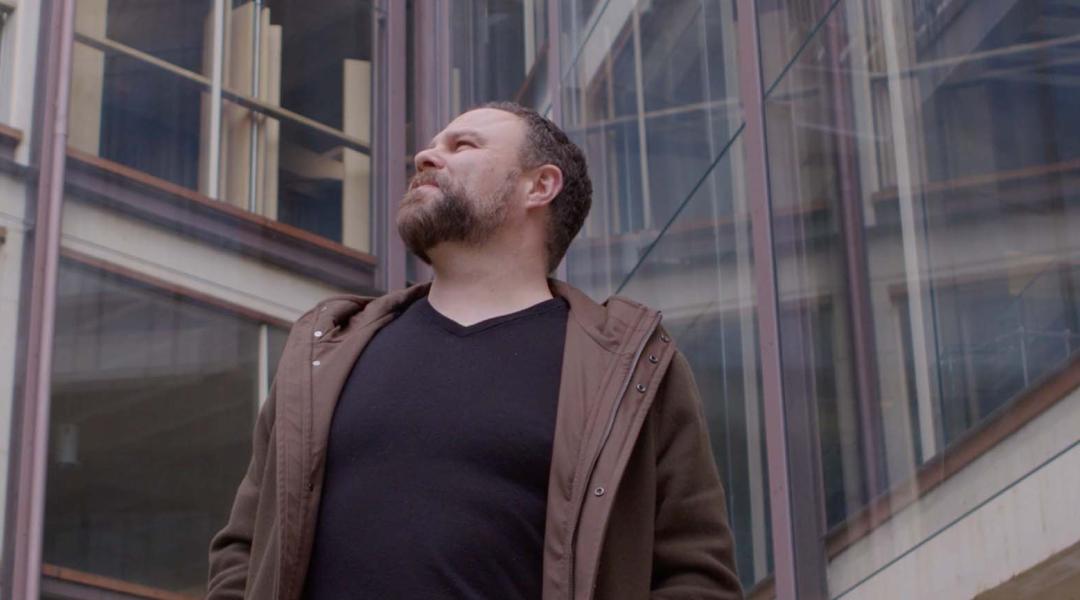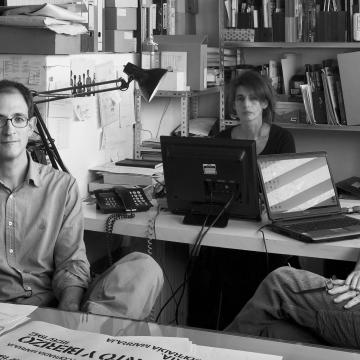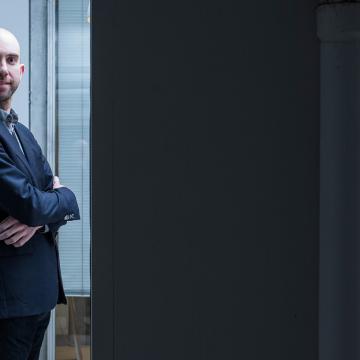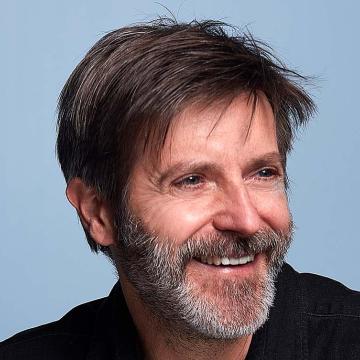Since opening on the 17th of April, Espacio Iberia has welcomed dozens of guests with one thing in common: their infinite talent. Talent that has inspired all the people who have sat there to listen to them.

Pedro Torrijos is full of curiosity and eager to tell the stories that occupy his mind. Every Thursday, he 'bangs on' about architecture, unlikely territories, and the people that make them possible on Twitter. Sitting down to chat with him is like embarking on a journey to places where we’ll definitely have a good time. Fasten your seatbelts because we’re about to take off!
If we were at a party, Pedro Torrijos (Madrid, 1975) would be the one that, without meaning to, would end up with people gathering around him hanging on his every word. His stories —the way he tells them— have that power, they captivate you from beginning to end.
The party takes place every week on Twitter. This multifaceted communicator —an architect and musician by training; a writer, professor and even property surveyor by trade— gathers a congregation of almost 200,000 every Thursday, who read his long Twitter threads about unique buildings or territories, which he describes as unlikely. A pastime that emerged in 2013 under the #LaBrasaTorrijos hashtag and that now has seasons as if it were a TV series (his stories have even been turned into a book). He also runs the podcast Cómo suena un edificio [How a building sounds], in collaboration with Museo ICO, for which he’s been considered one of the 50 Best in Podcasting by Forbes magazine. It seems like there’s no communication format he hasn’t tried.
This success isn’t a coincidence. He doesn’t only talk about architecture, or only for architects. Torrijos wants to go through the “impenetrable fog” that architectural communication involves: “There’s a problem with communication related to the world of architecture: it’s completely self-absorbed. People talk and write not just for architects, but for architects related to the world of academia."
Architecture for all
Pedro Torrijos’ way of communicating is far from academic. His timeline includes, for example, a real display of historical and technical information about La Pagoda that Miguel Fisac built in Madrid with the mysteries, symbols, and inner stories that shrouded it until it disappeared.
Combining disciplines is the leitmotif of this architect from Villaverde, who considers that “the two most important tools invented by humans are language and urban planning." If his stories are known for something, it’s that they don’t only bring us closer to a special or unique place, but also include a soundtrack and images. The complete experience to discover, understand, and, above all, enjoy architecture: “Disseminating information has always felt to me like standing behind a lectern and giving a master class. I have no higher purpose; my only intention is simply for people to have fun. I believe there’s a kinder path towards entertainment, and that’s what I try to do." The journey is the destination.
“The two most important tools invented by humans are language and urban planning”
Stories spanning thousands of words that he writes on the spot and compares to creating a tune: “A story is music, at the end of the day. You can incorporate rhythm, speed up or slow down the speech, create expectation, add obstacles, an element of surprise...” These are the resources responsible for captivating his audience: “I like the term communicate because it shares the same root as the word community. I like to think that what I do creates a community."
And he achieves this, given that his stories reach far-flung places he’d never have imagined: “I told a story about the Halley VI Antarctic research station and the guy who’d worked on its construction wrote to me from Antarctica; several Spaniards who live in Kiruna, the most northern city in Sweden, also got in touch with me after I told the story of how they’re relocating the city, building by building, on #LaBrasaTorrijos. It’s incredible how far social media can reach.”
Pontevedra is the future
When we address purely architectural topics, Pedro Torrijos explains that, often, we’re not aware of the effect of this discipline on our daily lives: “From the moment you open your eyes until you close them, you’re surrounded by architecture. For example, inside a flat, knowing where the sun comes in, how big the spaces are, or the clearance rooms need to have is essential.”
In the future, will we live on Mars?: “I don’t think we’ll end up living on Mars. The cities of the future won’t change so much in terms of size or composition, what’ll change is our relationship to them. They’ll be extremely pedestrianised cities, like Pontevedra, where private cars are almost a thing of the past”, he tells us.
“The cities of the future won’t be on Mars; they’ll look more like Pontevedra”
Ironically, while talking about Pontevedra, he ends up mentioning Benidorm: “Skyscrapers are the geometrical victory of the human species. And, when it comes to urban planning, they’re the most sustainable model that exists. In this sense, Benidorm is a great city. As an urban unit and population tool it’s really brilliant, a condensed urban city with reduced land use.”
He knows he’s got talent, but he’s also aware you have to nurture it: “For me, talent is the ability to keep your eyes wide open, curious to receive many things, and then take those things and know what to do with them. There are people who have a natural talent for certain things but, without a doubt, it’s the result of working on it for a long time.”
“Talent is the ability to keep your eyes wide open to receive many things, and knowing what to do with them”
Pedro Torrijos’ threads have taken us to places such as the church that guarded the Holy Grail, Disneyland, the Cardboard Cathedral in New Zealand, the Island of the Dolls in Mexico, the city of rubber in the Brazilian jungle or the pyramid of the end of the world in North Dakota. “Travelling always encourages our curiosity, and gives us better stories to tell”, he confesses. His particular journey continues next Thursday when he’ll bring us closer to a new unlikely territory. Our imagination will set flight, the soundtrack will keep us company, and the mission will be accomplished: we’ll have had a good time.


